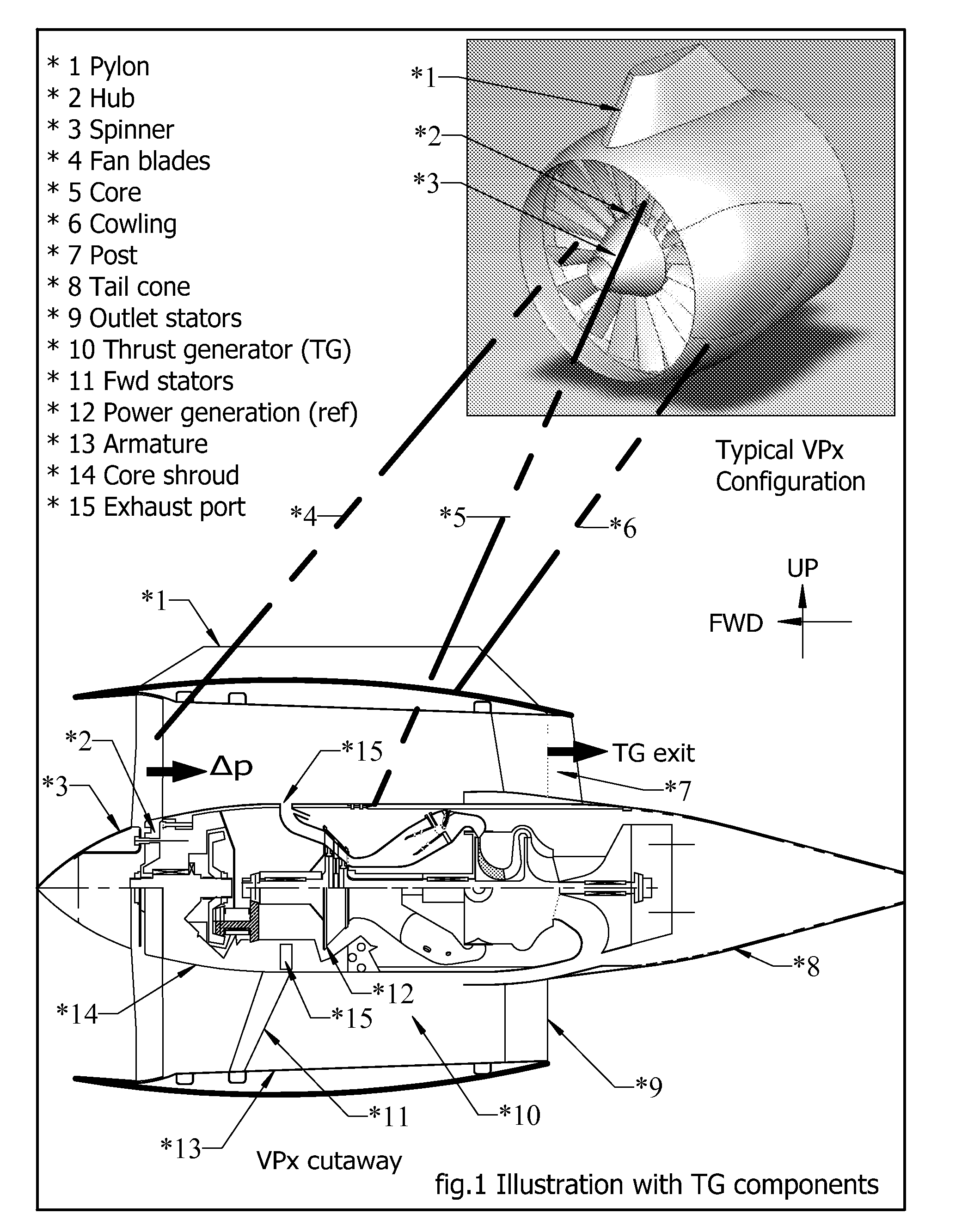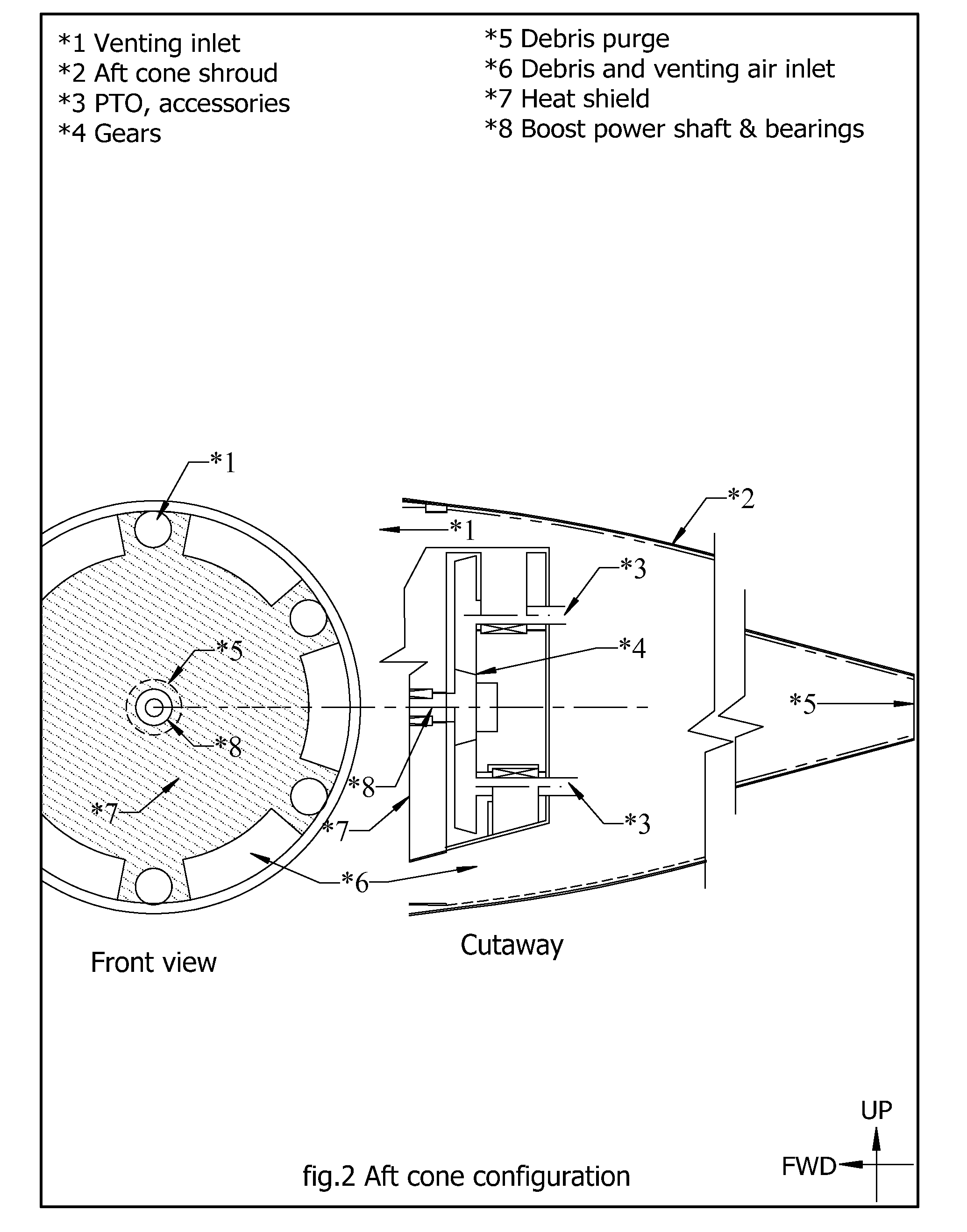Heat regeneration for a turbofan, a Velarus Propulsion
a turbofan and propulsion technology, applied in the field of turbofans, can solve the problems of inability to regenerate waste heat, inability to implement invention architecture, and innovative theoretical thermal efficiency, and achieve the effects of improving the longevity of the components, reducing pollution, and reducing the cost of fuel and cos
- Summary
- Abstract
- Description
- Claims
- Application Information
AI Technical Summary
Benefits of technology
Problems solved by technology
Method used
Image
Examples
Embodiment Construction
[0034]The specific architecture, configuration and functional details composing the embodiment of this invention allows for the VPx propulsion to be used in new aircraft design or to replace the propulsion units on existing aircraft. The airframe's appropriate design of the cowling inlet duct will make the VPx suitable for subsonic or supersonic flight. The major functional modules of the invention consists of the thrust generator (FIG. 1), the aft cone (FIG. 2) and the power generation modules in the core (FIG. 3) which includes reference to the generic hub. To improve clarity, the illustrations do not include the customary and standard structures consisting of beams, shear webs, cylinders and ribs. The illustrations intend to communicate the invention's essential layout and geometry necessary to implement the heat regeneration concept.
[0035]Referring to the cutaway in FIG. 1, the principal components of the TG includes its fanblades (*4) attached to a hub (*2), the turbine exhaust...
PUM
 Login to View More
Login to View More Abstract
Description
Claims
Application Information
 Login to View More
Login to View More - R&D
- Intellectual Property
- Life Sciences
- Materials
- Tech Scout
- Unparalleled Data Quality
- Higher Quality Content
- 60% Fewer Hallucinations
Browse by: Latest US Patents, China's latest patents, Technical Efficacy Thesaurus, Application Domain, Technology Topic, Popular Technical Reports.
© 2025 PatSnap. All rights reserved.Legal|Privacy policy|Modern Slavery Act Transparency Statement|Sitemap|About US| Contact US: help@patsnap.com



